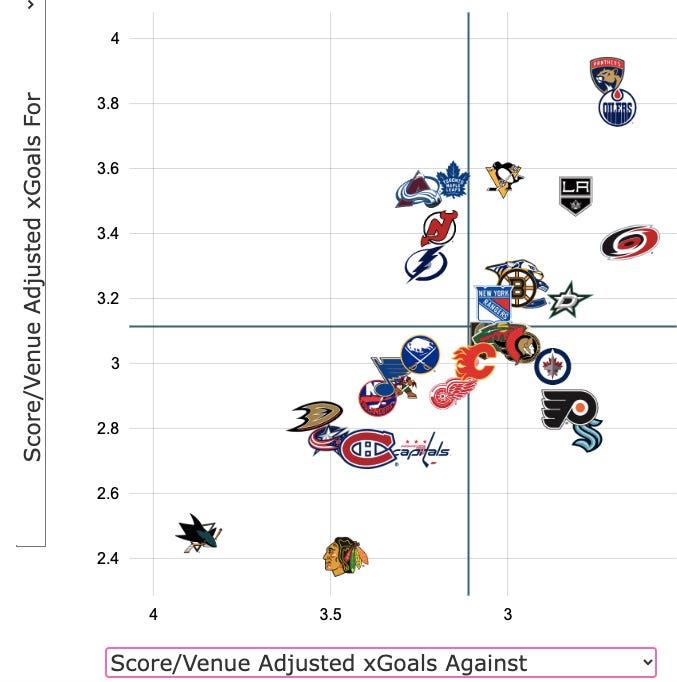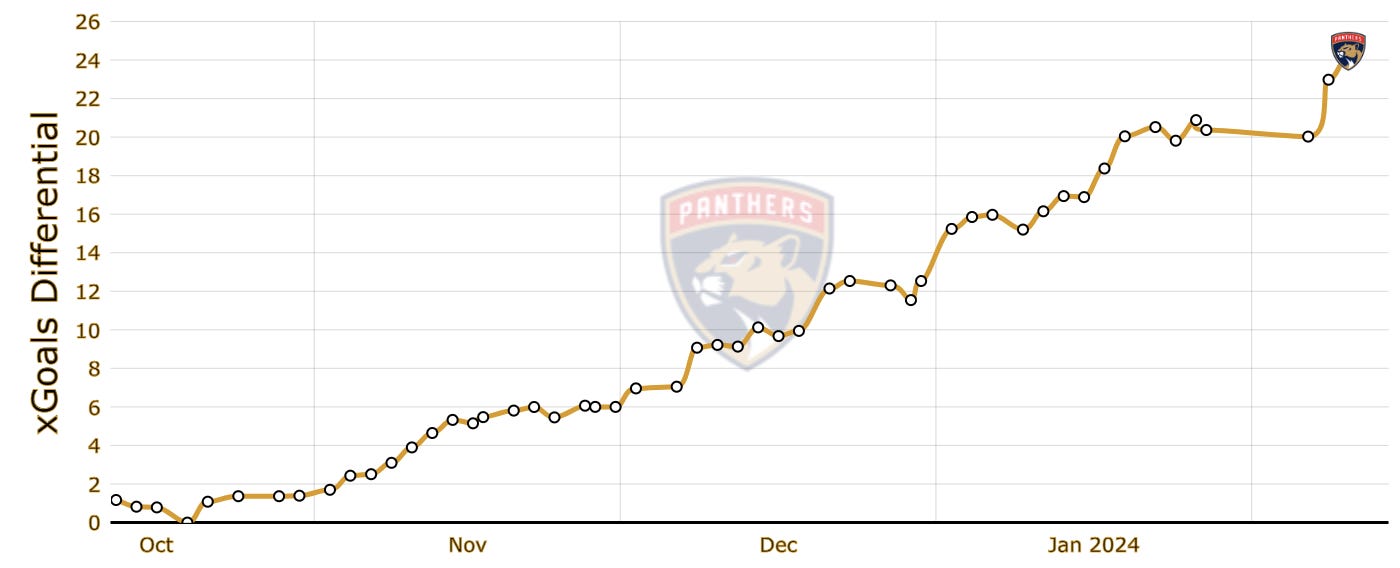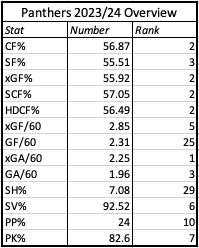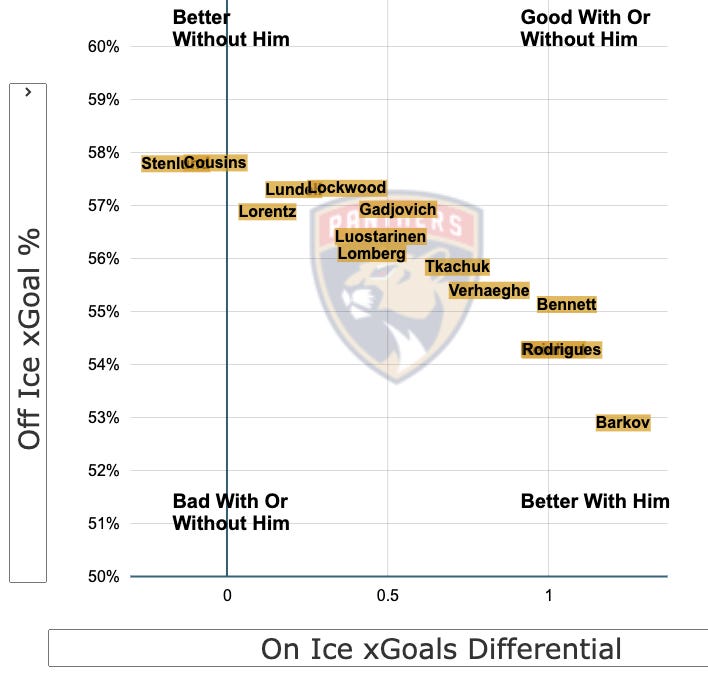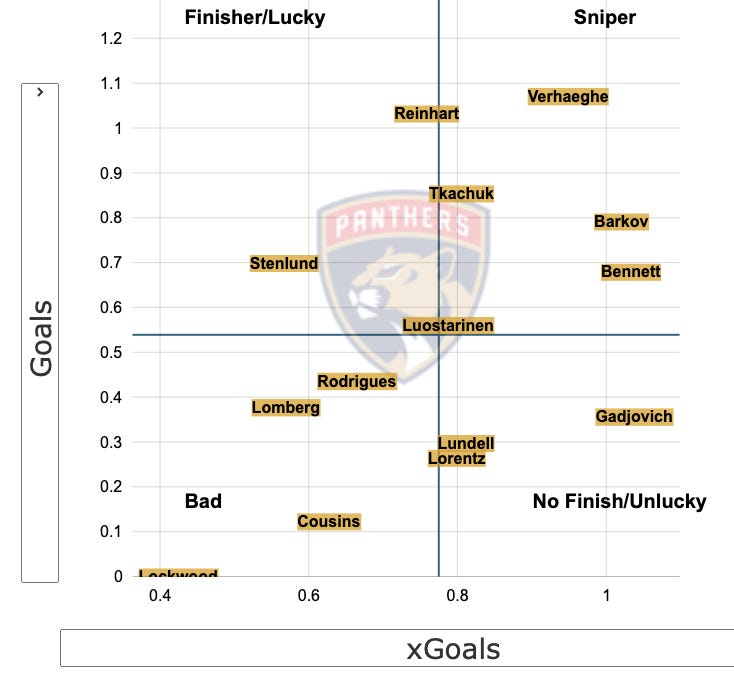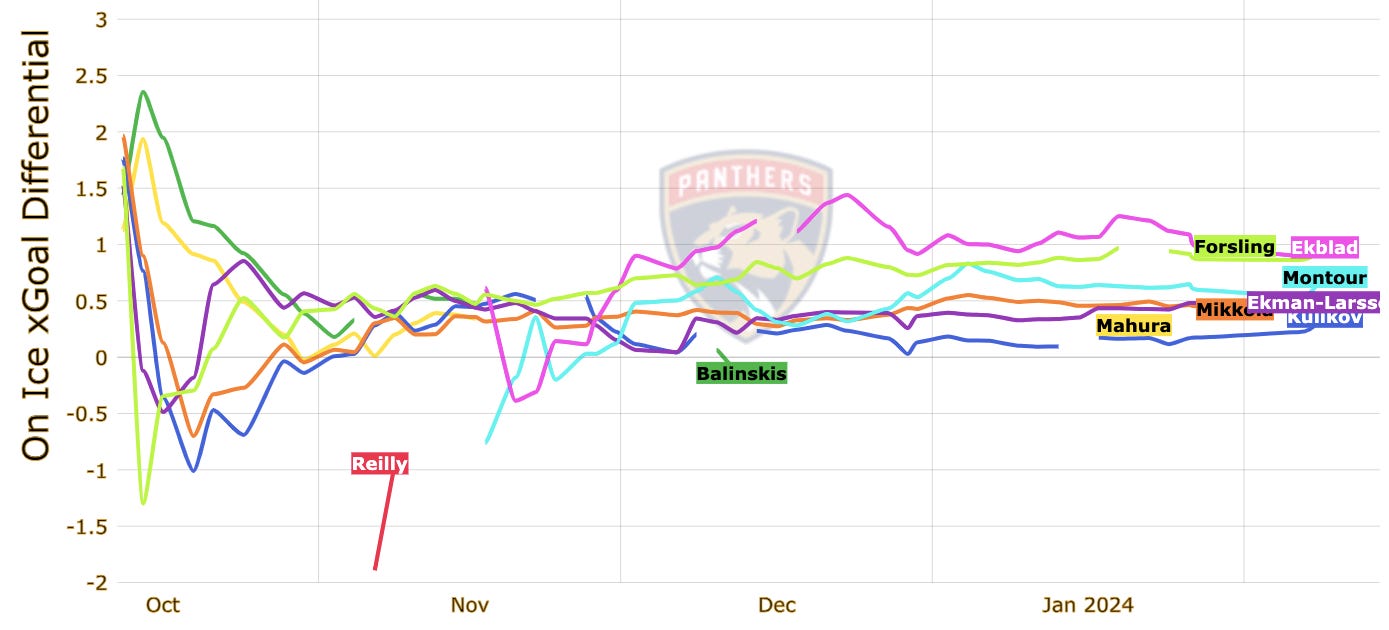When the NHL implemented a hard salary cap in 2005 it was intended to, among other things, inhibit a single franchise from employing a disproportionate amount of the hockey talent pool. Limiting the money available to each team created the riddle that governs the modern NHL.
Talent wins hockey games. Organizations are in constant competition with each other to have more of it any one else. Yet paying market value for talent results in most teams being somewhat equal - assuming they properly evaluate skill. So, in order to possess more talent than the competition organizations suddenly had to acquire personnel that would play for less salary than their true aptitude level warrants.
Initially, a myriad of strategies that attempted to solve the modern hockey riddle emerged. But the scientific laws of natural selection knows no boundaries. Thus, over the years, a single policy proved to be superior to all the rest. It became colloquially known as “tanking.” A majority of teams all decided to practice it. Tanking requires a franchise to intentionally loose in order to gain high draft picks that they could then use to acquire young players that compete on cheap entry level contracts followed by restricted free agent deals that are inexpensive due to artificial ceilings imposed by a limiting of potential bidding parties. Only after seven years of NHL experience or the age of twenty-seven will teams have to shell out money for a fair market deal.
Tanking , or “rebuilding,” remains the most common strategy used by NHL teams today. In any given season around a third of big league teams abide by its principles. Some organizations even publish open letters to their fans informing the world that the franchise will purposely loose as much as possible for the foreseeable future.
Of course, there is always an entity or two that conceptualizes its own distinct plan of action to solve a common problem. As it relates to the modern hockey riddle that creative outlier was Boston. The Bruins implemented an internal salary structure designed to keep its players wages below market level. This modus operandi proved to be highly successful as Boston has been a mainstay in the upper rungs of the NHL standings since 2007/08. Only just barely missing out on the postseason twice since then.
Both of those approaches to accessing underpaid talent come with drawbacks. Tanking and rebuilding requires lots of losing seasons. That means lost revenue from decreased ticket sales coupled with lower T.V. ratings. Designing internal salary restrictions invents complicated hidden politics and requires the team to win constantly so that players are willing to forfeit some pay for a chance at victory every year.
Against this backdrop, the Florida Panthers looked at each prominent set of guidelines before deciding that neither were optimal. Instead of using a time tested method the Panthers concocted their own blue print.
Florida formulated a strategy that didn’t necessitate long term losing or drama. It’s genius in its utter simplicity.
The Panthers decided not to draft.
Florida found a different way to fill out its NHL roster with talent.
They simply signed and traded for good players that possessed cheap contracts.
Only three players in the Panthers’ 2023/24 lineup were drafted by the team. The other eighteen were signed, traded for, or claimed on waivers.
Florida looked at a draft pick and saw an asset that could be used to improve its team now. Not five years in the future.
With most of the league placing an increased value on the draft slots that are essential to the execution of the prevalent rebuild strategy an imbalance began to occur. Draft selections became more valuable to clubs than the talented players that had already been picked in prior drafts. Organizations balked at trading a second or fourth overall draft choice. But they were more than willing to trade players like Sam Reinhart and Sam Bennett that were drafted second and fourth overall respectively only five years earlier.
By trading it’s current draft picks for former top five draft picks that were already in the NHL the Panthers were fundamentally trading 18 year olds who would require a half decade of development for 23 year olds who were about to enter their years of peak performance. Thus removing years of noncompetitive mediocrity from their route to relevance.
Not building a team through drafting cured a lot of the cons that are a byproduct of the tanking or internal salary limit processes. There was no need to intentionally loose for higher draft picks. Locker room politics were minimized. And most importantly, the amount of time needed before the team was ready to compete again was minimal.
Florida Panthers’ GM Bill Zito began carrying out the team’s new plan in earnest after being appointed his post in September of 2020. The Yale educated former player with a law degree hanging on his wall took a unique perspective into his work building the team.
The Panthers front office began making moves in the fall of 2020. Their philosophy never changed. They continually signed and traded for players that were inked to contracts for less money than their talent level indicated they should be making.
But if the players were that good and that cheap how come other teams didn’t try to sign them in turn raising their price to fair market value? Good question. The answer is that Florida analyzed at those players and realized that they were good while the other teams looked at the same players and decided that they were bad.
Over and over again Florida was right and the other teams were wrong.
Florida analyzed Jonah Gadjovich allowing them to discover that he had a 50.36 CF% / 52.00 xG% / 52.59 HDCF% on an awful 2022/23 Sharks team while playing most of his minutes with Steven Lorentz and Oscar Lindblom as linemates. The rest of the league saw a guy playing on the fourth line of one of the NHL’s worst teams who fought nine times.
Gadjovich signed a one year $810,000 contract with the Panthers last offseason. So far this year he is rocking a 55.52 CF% / 58.02 xG% / 56.72 HDCF%. It’s true that he is still a fourth liner and that he has already fought ten times this year. It’s also true that he controls play at a rate that places him in the upper echelon of fourth liners in the NHL.
It’s not just a last offseason blip that netted Florida a grinder. The Panthers have been evaluating players better than the rest of the league for years.
Carter Verhaeghe is as good an example as any. Bill Zito made the speedy forward one of his first Panther signings on October 9 2020. The two-year $1M AAV pact reflected the fact that Verhaeghe had only played 52 NHL games at that point. Not an inspiring number for a player that just turned 25 years old. His 13 points during those games told the story of a seemingly pedestrian player. That story was never true.
Verhaege compiled 36 points in 43 games during his first season on Florida’s east coast. Zito rewarded him with a three year $4.16M dollar deal. Even that three million dollar pay rise turned into an extraordinary bargain when the Canadian netted 24 goals and 55 points in 2021/22 only to follow it up with 42 goals and 73 points in 2022/23. His underlaying numbers jumped off the page just like those raw goal totals.
Carter Verhaeghe was not the only player that Bill Zito signed on October 9 2020. The GM also agreed to terms on a two year league minimum deal with Ryan Lomberg. Lomberg, like future Flame to turned Panther Sam Bennett, was never given a chance in Calgary. In Florida the pesky diminutive winger turned into a valuable role player as demonstrated by his 53.85 CF% / 55.91 xG% / 53.05 HDCF% line in 2023/24.
Zito didn’t just sign first line forty goal wingers for pennys on the dollar or fourth line stabilizers at a sizable discount. He also uncovered a number one defenseman for free on the waiver wire.
Gustav Forsling was placed on the waiver wire by the Carolina Hurricanes in 2021.
In 2024, that same Gustav Forsling is a true number one defenseman with a sterling 59.15 CF% / 58.94 xG% / 62.77 HDCF% stat line. Acquiring an elite defender for free and then paying him $2,666,667 per season, which is a fraction of the seven to ten million dollars a year that comparable players of his performance level earn, is an incredible piece of business. It’s the type of acquisition that many executives only make once in their entire careers.
Bill Zito has done it repeatedly in just three short seasons.
After the Forsling coup there were the trades for the Sams’.
Sam Reinhart was acquired in a trade with the Buffalo Sabres in July 2021. Florida paid what appeared to be a steep price to execute the deal by sending top end goalie prospect Devon Levi and a first round draft choice to the Sabres.
The Panthers instantly signed Reinhart to a three year pact with an AAV of $6,500,000. In the end, both the trade and the accompanying contract were terrific bargains for the Panthers. Reinhart posted 33 goals and 31 goals in his first two seasons in Florida.
So far this year, Reinhart has posted a dazzling 58.74 CF% / 59.81 xG% / 59.35 HDCF% stat line.
His 39 goals are the second most of any player in the NHL.
Sam Bennett found himself in Florida after a trade from Calgary. The Flames penciled the former top five draft pick into the bottom six and never bothered to look for an eraser. Predictably, things fell apart pretty quickly for Bennett in Cowtown. The team refused to play him for more than 14 minutes a game or with other offensively skilled players.
Frustrated, the power forward asked for a trade. The Panthers called the Flames and asked for the power forward.
The final trade agreement included Bennett and a sixth round draft pick for Emil Heineman and a second round draft slot. In the months following the trade a four year contract with a $4,400,000 AAV was signed.
Bennett, playing second line centre minutes alongside offensive oriented line mates, broke out instantly in Florida scoring 15 points in his first 10 games for the team following the midseason swap.
A vast improvement on the 12 points he posted in the 38 games he played for Calgary that same season prior to the trade.
Bennett followed it up by scoring 28 goals in 71 games for the Panthers in 2021-22. and posting 40 points in 63 contests last year. So far in 2023/24 he has recorded 27 points in 43 games along with outstanding 57.66 CF% / 58.93 xG% / 59.18 HDCF% clips.
April of 2021 was also when Florida traded a third round draft pick for Brandon Montour. Per Panther protocol, the defenseman was soon signed to a three year $3,500,000 AAV contract.
Montour’s 11 goals and 37 points in his first full season in the Sunshine State were the highest season totals in his seven year NHL career. The 16 goals and 73 points he scored during the following 2022/23 campaign made him the fifth highest scoring defenseman in the NHL.
A few months later in July of 2021 former sixth overall draft selection Oliver Ekman-Larsson was traded from the Arizona Coyotes to the Vancouver Canucks. Largely due to the fact that the Swedish defender was entitled to be paid $8.25M per year until 2026/27. A price tag that no longer matched up with the quality of play he provided due to declining performance.
OEL lasted just two season in BC before the Canucks completed the fifth most expensive buy out in NHL history to disappear the last four years of his eight year contract. On July 1 2023 the Florida Panthers signed OEL to a one year $2.25M contract. The defender burst back into prime form this season by playing to the tune of a 56.06 CF% / 55.70 xG% / 53.80 HDCF%.
On July 2 2023 the Panthers locked up Evan Rodrigues for four-years at a $3M AAV. The undrafted winger has anchored Florida’s third line with a 58.74 CF% / 59.55 xG% / 59.69 HDCF% line. He’s also chipped in 33 points in 55 games.
Such shrewd signings created a very deep Panther team. But one industry shaking trade vaulted Florida to the top of the NHL.
On July 20 2022 superstar Matthew Tkachuk told the Calgary Flames he would not sign another contract with the team. On July 22 2022 Thachuk was a Florida Panther. His eight year commitment agreed to at the time of the trade cost the Panthers $9.5M per season.
In the wake of the trade many experts hailed the exchange as triumph for Calgary. The Flames received Jonathan Huberdeau fresh off of his career 115 point season, Mckenzie Weegar, a well rated prospect, and a first round draft pick in exchange for their former top line scorer.
Over the next year a lot changed. Tkachuk lead the Panthers to the Stanley Cup final while becoming a minor celebrity in the United States. Huberdeau scored less than half as many points in his first season in Alberta as he did during his last year in Florida. Weegar played well but the Flames missed the playoffs altogether.
Looking back now, it’s difficult not to acknowledge that Bill Zito acquired a great player for a below market price.
But that’s just what Bill Zito does.
Calling the Florida Panthers a great hockey team probably won’t surprise anyone. After all they participated in the Stanley Cup final last season. They won the Presidnets’ Trophy in the season before that. They’ve been an elite team for a while now. Ever since Bill Zito took over GM duties in the Fall of 2020. Yet, somehow, the Panthers are better than most people think they are.
Maybe even a lot better.
Establishing the Panthers’ Prominence
We know why the Panthers are so good. Their solution to the modern hockey riddle of signing and trading for players that are tied to cheap contracts has worked flawlessly.
But how good are the Panthers really? It’s an easy case to prosecute. As open and shut as they come. Exhibit A is below. Based on their play, Florida is the best team in the NHL at creating goals and just a hair behind in limiting goals against. Put another way, the logos in the upper right are of the best all around hockey teams. The further up and the further right the better. The squads in the upper left box are super at scoring but sucky at defending. The teams in the lower left box are sucky at everything. And finally, teams in the lower right box are the boring ones. They play great defense without creating offense.
There’s one team all alone at the very top right most corner.
The Panthers expected goal differential on a game by game basis tells the story of a team that outplays its opponents almost every night.
Both graphics paint the same picture. The Panthers are really good at pretty much everything. They score a ton of goals via a variety of methods. Florida can beat defenses with speedy transitions that turn into brisk rush passing patterns. The Panthers forecheck is predicated around perfectly timed waves of bodies that knock pucks loose for quick strikes at the net or sustained cycles below the goal line. The power play converts at a top ten rate. Almost one fifth of Panther goals are scored as a direct result of a rebound. A mark that places the team second overall in the league. And an especially important fact given that rebound goals are one of the more common avenues to offense in the playoffs.
Florida scores a lot. But what makes this Panthers team so terrifying for opponents is that they defend almost as well as they attack.
An assortment of statistics in the table below show how dominate Florida’s all around game can be.
Once the Panther’s shooting percentage regresses up to where it should be given the team’s obvious talent level Florida will be by far and away the best team in the NHL.
Forwards
There are two templates that can be used to build a top forward group. A team can create a line up based on the premise of depth where all four lines outplay their opposition. Or, a team can acquire a few elite players that drive the team while signing fridge players to fill in the gaps. The Panthers have used both models.
Florida has twelve attackers that are outplaying their matchups. That’s as much depth as any team in the league has. There are no weak links. No lines to target. Every Florida forward is better than their counterparts on the other team.
If that’s not enough the Panthers can roll out four elite forwards. Verhaeghe, Barkov, Tkachuk, and Reinhart all own performance numbers that make them some of the best players in the NHL.
The chart below demonstrates the top end finishing ability that Florida’s top four forwards possess.
The Panthers forward group is a juggernaut. It’s deep enough that it has no weaknesses. It also includes some of the best attackers in the NHL.
Defensemen
Florida’s defensive corps is constructed similarly to its forward group. The Panthers’ defense is both deep and contains a couple world class players.
Aaron Ekblad and Gustav Forsling form a true number one defense pairing. Add that to the fact that all seven regular Panther defenders have a positive on ice expected goal differential and the result is blue line that has no obvious deficiencies.
In a league obsessed with solving the modern hockey riddle by building a core of key players via the draft, the Florida Panthers are the best team because they decided not to draft. Instead, they designed a novel strategy to crack the riddle. Florida traded for players that were already drafted by other teams years prior and signed them to below market level contracts.
The remaining roster needs were addressed by signing players with unfulfilled potential to economical deals.
This sign and trade policy was used to acquire eighteen of the twenty-one players that make up the 2023/24 Panthers. The final three players on the roster were drafted by Florida. Two of them are the team’s best forward Aleksander Barkov and the team’s best defenseman Aaron Ekblad.




